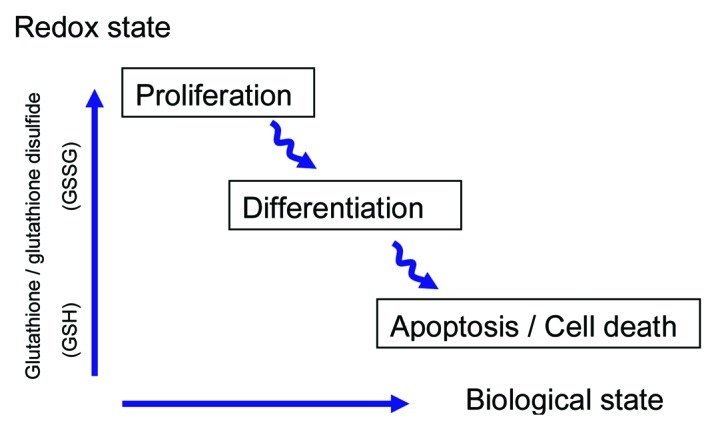
Figure 2. Redox state in the life cycle of cells The intracellular redox state is the resulting balance between the reduced and oxidized forms of several key redox pairs. The tripeptide glutathione (GSH; γ-glu–cys–gly) is a major thiol antioxidant found ubiquitously in tissues of higher organisms. The glutathione/glutathione disulfide (2GSH /GSSG) couple is the most abundant redox couple in a cell, and can serve as an important indicator of redox environment (i.e., based on the GSH/GSSG ratio with GSH and GSSG being the reduced and the oxidized forms, respectively). The oxidized form becomes progressively more abundant in the life cycle of animal cells, being correlated with the functional state, from division to apoptosis, through differentiation (figure adapted from56). In plants, the glutathione redox pair also acts as a modulator of development and morphogenesis. Elevated concentrations of cellular GSH, and ultimately a higher GSH/GSSG ratio, are often associated with rapidly growing tissues, including meristematic regions, whereas increased GSSG contents often correlate with dormancy and cell death. Exogenous additions of reduced or oxidized glutathione strongly influence in vitro developmental events: GSH promotes cell proliferation, while GSSG promotes organized development, notably somatic embryogenesis development.106
